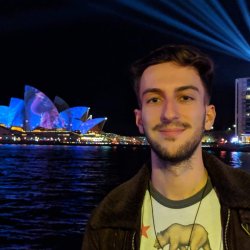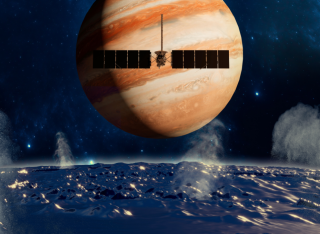
Danny Owen
About
My research project
Continuation of Heteroclinic Connections between Quasi-periodic OrbitsHeteroclinic connections between quasi-periodic orbits provide incredibly useful opportunities for novel spacecraft mission design. However, finding these connections is difficult. My research explores systematic methods of discovering these connections via dimension reduction methods. Once connections are found this way, we propose that pseudo-arc length continuation can be used to explore families of heteroclinic connections, removing much of the difficulty associated with exploiting these unique and useful trajectories.
Supervisors
Heteroclinic connections between quasi-periodic orbits provide incredibly useful opportunities for novel spacecraft mission design. However, finding these connections is difficult. My research explores systematic methods of discovering these connections via dimension reduction methods. Once connections are found this way, we propose that pseudo-arc length continuation can be used to explore families of heteroclinic connections, removing much of the difficulty associated with exploiting these unique and useful trajectories.
Publications
Heteroclinic connections represent unique opportunities for spacecraft to transfer between isoenergetic libration point orbits for zero deterministic Delta V expenditure. However, methods of detecting them can be limited, typically relying on human-in-the-loop or computationally intensive processes. In this paper we present a rapid and fully systematic method of detecting heteroclinic connections between quasi-periodic invariant tori by exploiting topological invariants found in knot theory. The approach is applied to the Earth-Moon, Sun-Earth, and Jupiter-Ganymede circular restricted three-body problems to demonstrate the robustness of this method in detecting heteroclinic connections between various quasi-periodic orbit families in restricted astrodynamical problems.
Current and future missions such as JUICE and Europa Clipper will attempt to answer long-standing questions regarding the presence and composition of liquid subsurface oceans below the crusts of Jupiter's icy moons. To achieve their scientific objectives, such missions require complex trajectories in the vicinity of multiple large bodies. In support of moon tour design, the tri-circular restricted five-body problem has been introduced in previous work to model the Jupiter-Io-Europa-Ganymede system while exploiting the Laplace resonance of these Galilean moons, allowing for a non-autonomous periodic dynamical system to be defined in which periodic and quasi-periodic orbits, and their associated invariant manifolds, have been shown to exist. In this paper we demonstrate the trajectory design benefits of the tri-circular problem via the generation of a variety of low-energy transfers between libration orbits at Europa and Ganymede. This is achieved by investigating regions of overlap in the stable and unstable manifolds of the desired departure and arrival orbits in the planar case of the tri-circular problem. Transfers were found with ∆V costs as low as 500 m/s and times of flight as low as 30 days.
CubeSat missions that take advantage of ride-sharing opportunities to the Moon are typically limited by a small v budget. In this paper, a patching point method is applied to design a low-energy lunar transfer for a spacecraft initially placed into a circumlunar free-return trajectory. Initial conditions generated within weak stability boundaries further guarantee ballistic lunar capture upon arrival. A large number of optimised trajectories are produced, with a minimum mission v cost of 32.51 m/s. Additionally, the B-plane values of the spacecraft during its initial flyby of the Moon are investigated. A relationship between the initial position of the Sun in the synodic frame and the B-plane values is observed, in which successful trajectories appear to favour entering into certain orbital resonances with the Moon.
The JUICE and Europa Clipper missions will soon be launched to investigate the presence of liquid subsurface oceans underneath the icy moons of Jupiter. Both missions rely on complex moon tour trajectories whose design can benefit from a preliminary understanding of the moons' relative geometry when candidate flyby sequences are researched. To aid with this objective, a new time-periodic system of equation of motion is introduced based on the 4:2:1 Laplace resonance of the Io-Europa-Ganymede system. The dynamical system is investigated with numerical continuation techniques that seek to grow equilibria and periodic orbits from the circular restricted three-body problem into periodic and quasi-periodic solutions that populate the phase space when fourth-and fifth-body perturbations are taken into account. The stability of these solutions is further analyzed in the new time-periodic model, searching for stable and unstable manifolds that can help identify fuel-efficient transfer opportunities between the Galilean moons of Jupiter.
Methods of generating heteroclinic connections between quasi-periodic orbits typically rely on human-in-the-loop or machine learning techniques to find intersections in sets of data in more than three dimensions. We propose a fully systematic method of generating these connections using an invariant property found in knot theory: the linking number. This method proves to be robust in detecting heteroclinic connections between isoenergetic invariant tori in the circular restricted three-body problem.
